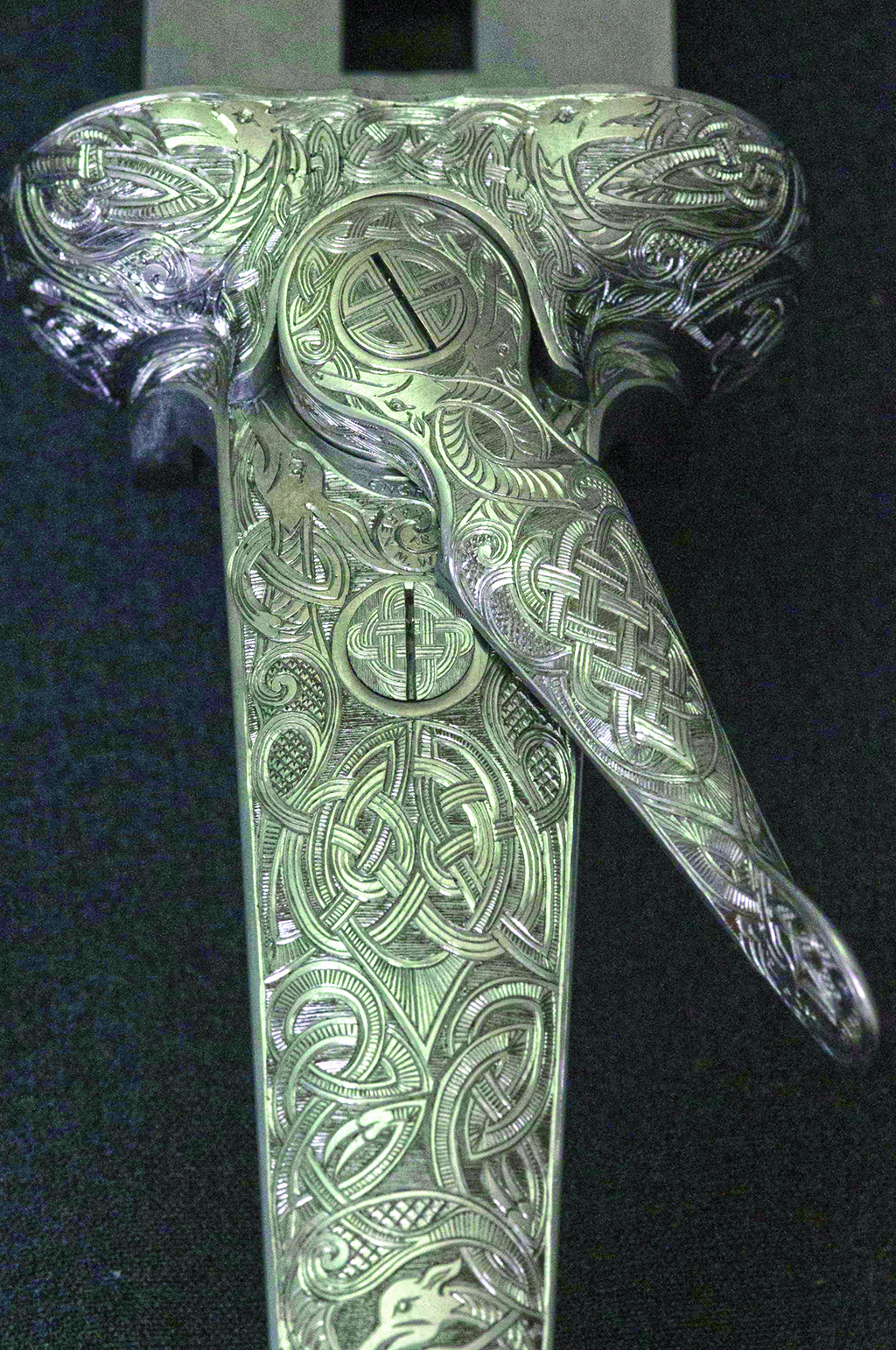
Karen’s trigger happy with her engraving skills
The intricate art of hand engraving guns takes patience, skill and barrel loads of craftsmanship.
Being able to handle a gun isn’t something you see on many a maker’s CV – unless you are designer and engraver Karen Wallace.
Originally from South Lanarkshire, Karen studied jewellery and silversmithing at Glasgow School of Art. Following graduation and work as a bench jeweller, she decided to diversify.
‘There were not very many engravers around, so I thought, if I can learn to engrave, then I’ll always have money to pay the mortgage,’ she laughs.
An apprenticeship with master engraver Malcolm Appleby, MBE, followed and Karen was put forward to engrave a gun for renowned gunmakers Dickson & MacNaughton.
A labour-intensive process, this isn’t simply a swirl here or an initial there, absolutely all of the exposed metalwork on the gun is hand engraved, as well as all of the pins that hold it together.
‘All the pinheads have to get engraved with different things as well,’ Karen says. ‘I’ve got a microscope but, yes, they are quite small.
‘Gun engraving and gunsmithing are probably the British version of the Samurai Sword. We’re renowned for it, historically we’re one of the best. The guns will be used, but a lot of people buy them to have as a piece of art.’

The detail in Karen’s work is impressive (Photo: Angus Blackburn)
Engraving the intricate Celtic design is done with the gun in parts. ‘There are bits that you can’t mark at all,’ Karen says, ‘so you have to be very careful in the way you are handling it. The metal is different thicknesses, so you might engrave one bit quite easily, but two centimetres up you have to watch you don’t go through it.’
Karen practices traditional hand engraving. ‘I was taught using the very old method of hammer and chisel, so it is just a tiny little hammer and a graver, which is highly polished to get the best cut through the metal.’
To create the design, air plasticine is rolled on to an area and the image drawn freehand on to it with a needle-sharp bone point; the design is then scribed on with a steel scribe. ‘You’re constantly correcting as you go,’ Karen says.
‘Basically you can just draw as you would an ink drawing, and from there you start to chop the design out with a bit of hammer and chisel, and your gravers, until it looks pretty.’
The end result should feature cuts that are bright, strong and defined before the gun is sent off to be colour hardened. ‘When I see it, we call that “in the white”, when it just looks like steel,’ Karen explains, ‘then it comes back all these lovely blues and brown colours, and that completely changes the way it looks again.’
It’s a painstaking process, an art that takes skill, patience and finesse, ‘I really enjoyed it, I want to do another one,’ Karen smiles, ‘I keep on hinting – can I have another one please?’
Click HERE to find out more.
This feature originally originally appeared in our August 2016 edition.
TAGS

